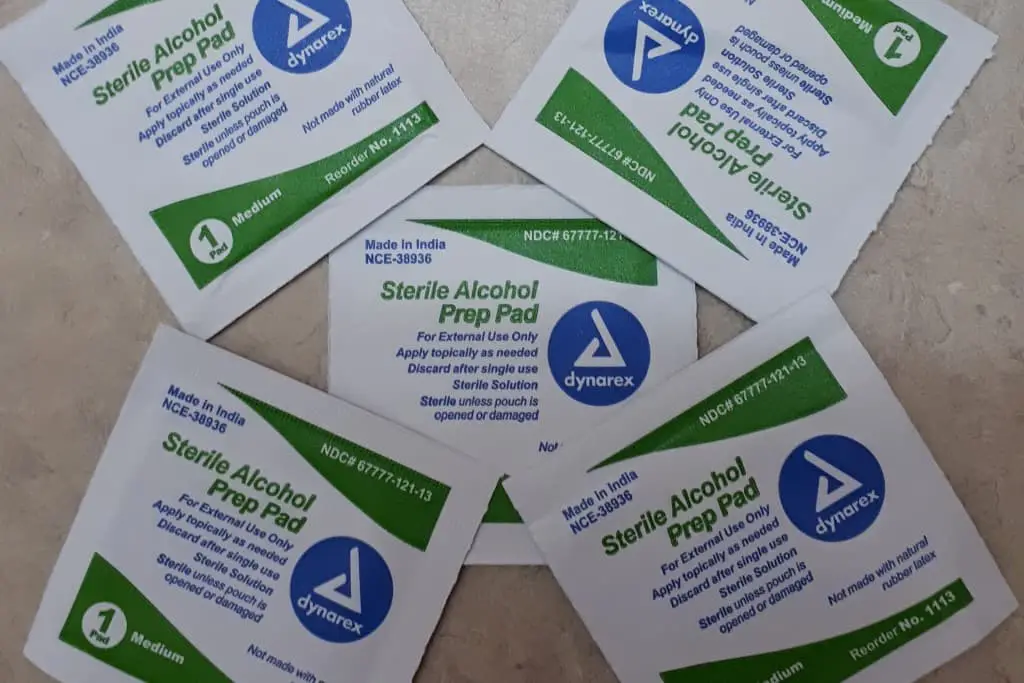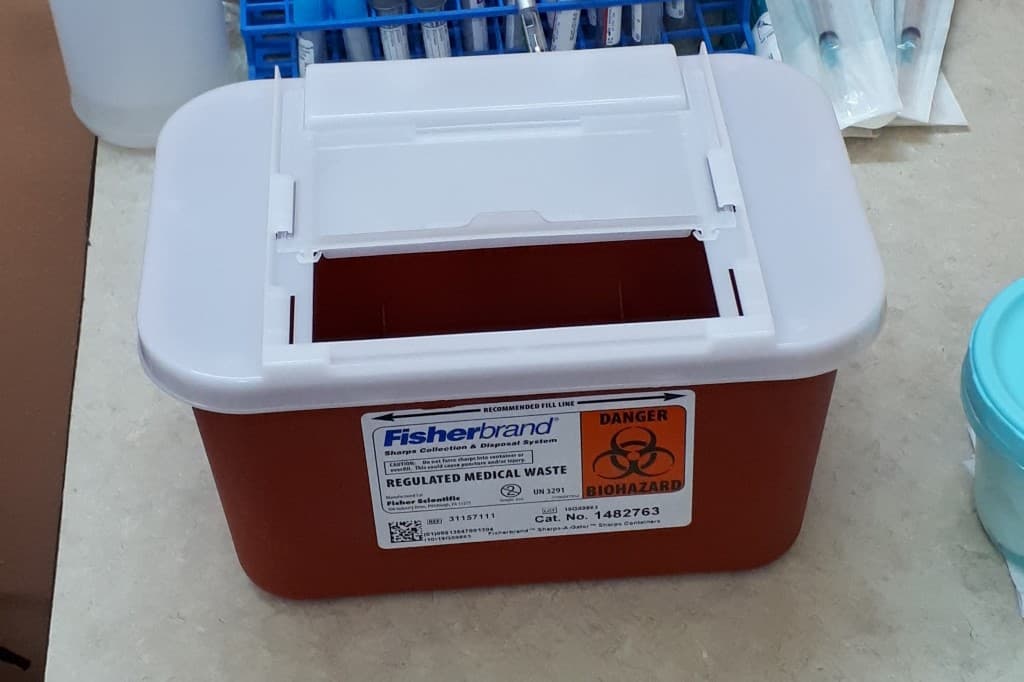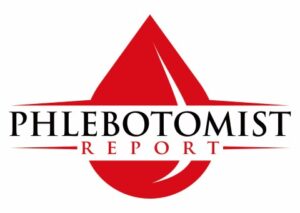Like everything else, phlebotomy has its own tools for getting the job done. There is a piece of equipment for every step in the process to ensure a safe and proper procedure.
Every phlebotomist uses these tools and they are a must have when performing venipuncture. There are a few others that make drawing blood easier especially when dealing with hard to find veins, like transilluminators and heat packs, for example.
However, if you don’t have them you can still be successful at finding veins and drawing blood. Many hospitals and clinics do routine venipuncture without using transilluminators or heat packs.
Here are the top 13 equipment needed for phlebotomy. They are not in any particular order.
13 Equipment Needed for Drawing Blood
Requisition form
The patient form is not a tool but it is needed to identify the individual properly as well as inform the technician about the type of tests and number of tests that the person is doing.
Tourniquet
The tourniquet is used to help the phlebotomist identify a vein and draw blood. It is place about 3-4 inches above the insertion site and left there for about 1 to 2 minutes. That gives enough time for a vein to pop up and to draw blood. Once blood has began to flow into the tube, you can release the tourniquet. I wrote an article about Tourniquet Types, Advantages and Disadvantages. Go here to read it.
Phlebotomy tray
A phlebotomy tray holds most of the tools you are going to be using for venipuncture. That includes the tubes, needles, gauze pads, plasters, alcohol swabs, mini sharps containers, syringes, tourniquets, plus more. The idea here is for the tools to be within your grasp. You don’t want phlebotomy tools far away from you.
Alcohol swabs or iodine
Alcohol is used to clean and disinfect the venipuncture site, preparing it for needle insertion. The site must be allowed to air dry. Do not dry it with the gauze pad or cotton ball, and do not touch it with your finger when inserting the needle into the vein.

Gauze pads or cotton balls
Gauze pads are placed on the venipuncture site to stop bleeding after the needle has been removed from the vein. Apply some pressure on the vein for a minute or so. Some people’s blood clot faster than others.
Adhesive bandage
The bandage is place on the venipuncture site after bleeding has stopped to protect the site as well as to stop any further bleeding and reinforce clot formation. If blood won’t stop after a couple minutes or so, the gauze can be left on the site with the bandage place over it.
This is normal for patients who are on blood thinners. Their blood will normally take longer to clot than others who are not on thinners. Leaving the bandage over it for several minutes will often do the trick.

Needles
This will be either the vacutainer, syringe or butterfly method. The choice of needle will depend on the type of vein the phlebotomist is faced with. The evacuated tube system is suited for good veins while the syringe or butterfly is for difficult ones.
Collection tubes
There are several tubes for collecting blood. The most common ones are the purple, blue, red, and gray top tubes. Purple is for hematology and blood bank, blue is for coagulation and D-dimer, red is for chemistries and serologies, and gray is used for glucose and lactic acid.
The purple, blue, and gray tube have a substance in it to prevent the blood from clotting while some red tops have a clot activator to speed up the clotting process.
Writing device (pen/marker)
Every tube with blood in it needs a name. After drawing blood, the patient name needs to be written on the tube to avoid any tubes with no name and to have the correct tube for the right person.
Some labs may use a printed label with the patient name instead of writing the patient name on the tube. It may not matter which way it is done, but the individual name needs to be on the tube. For more information on properly labeling samples, click here to read Labeling and Transporting Samples.
Sharps container
A container is needed to dispose off used needles and corresponding equipment. Collection tubes, syringes, butterfly needles and vacutainers have to be thrown away immediately after use. They can’t be left on the table or near for any period of time.
This will help reduce needlestick injuries and contaminating surrounding areas with blood. There should also be another container near to dispose off soiled gloves, gauze, cotton balls, alcohol swabs, bandages and other contaminated materials.

Phlebotomy chair
This is where the patient sits and has the venipuncture done. It is designed for the client and should be rather comfortable.
A normal chair can be used along with a table if no phlebotomy chair is available. In some instances, neither a phlebotomy chair nor a table will do the job. The person will extend their arm and have their fist recline on their lap.
This usually happens when the phlebotomy chair or table puts the patient in an awkward position.
Gloves
The phlebotomist is required to wear gloves when drawing blood. He/she may have no gloves on when looking for a vein. That is especially necessary if locating a vein is difficult.
Trying to feel a vein with gloves on can be near impossible when the vein is deep or the person is dehydrated. When veins stay low and do not rebound, feeling them is slim. Gloves on make it more challenging.
However, after you have found the vein and marked it, you will have to put on gloves to perform the actual venipuncture. Gloves are needed to protect you from blood or infectious materials.

Hand sanitizer
This is used to sanitize your hand before and after patient contact. You have to wash or sanitize your hands, then put on gloves and go ahead with the procedure.
After the procedure is done and you are done with that individual, you have to discard the gloves you are wearing and repeat the process of sanitizing or washing your hand before doing the next person.
